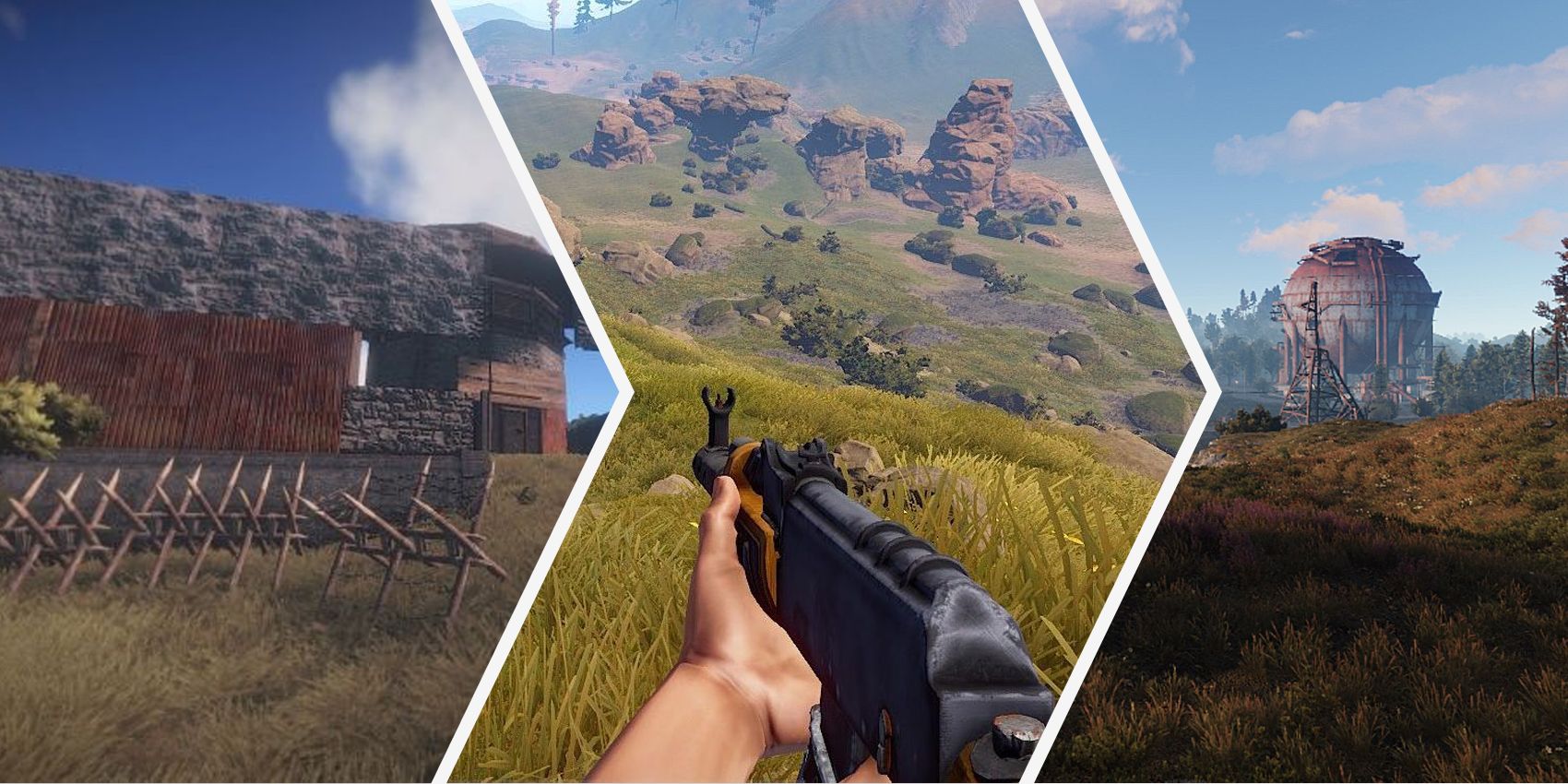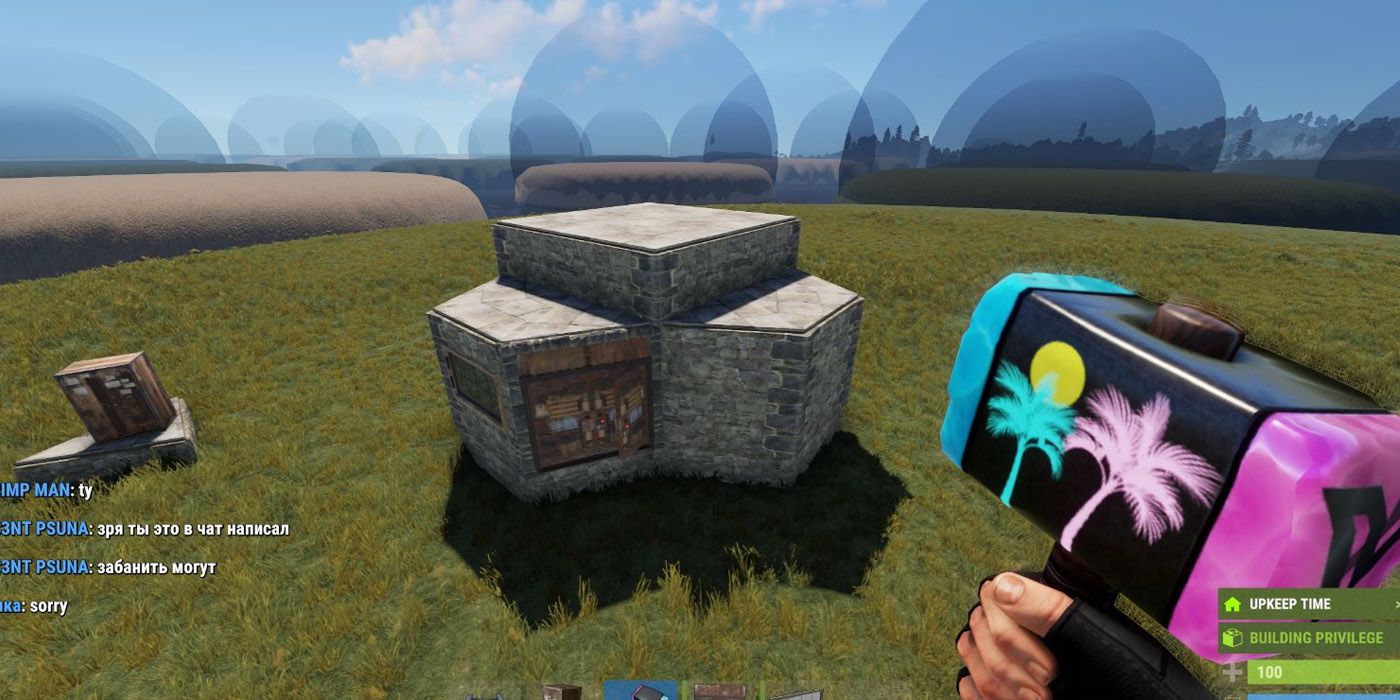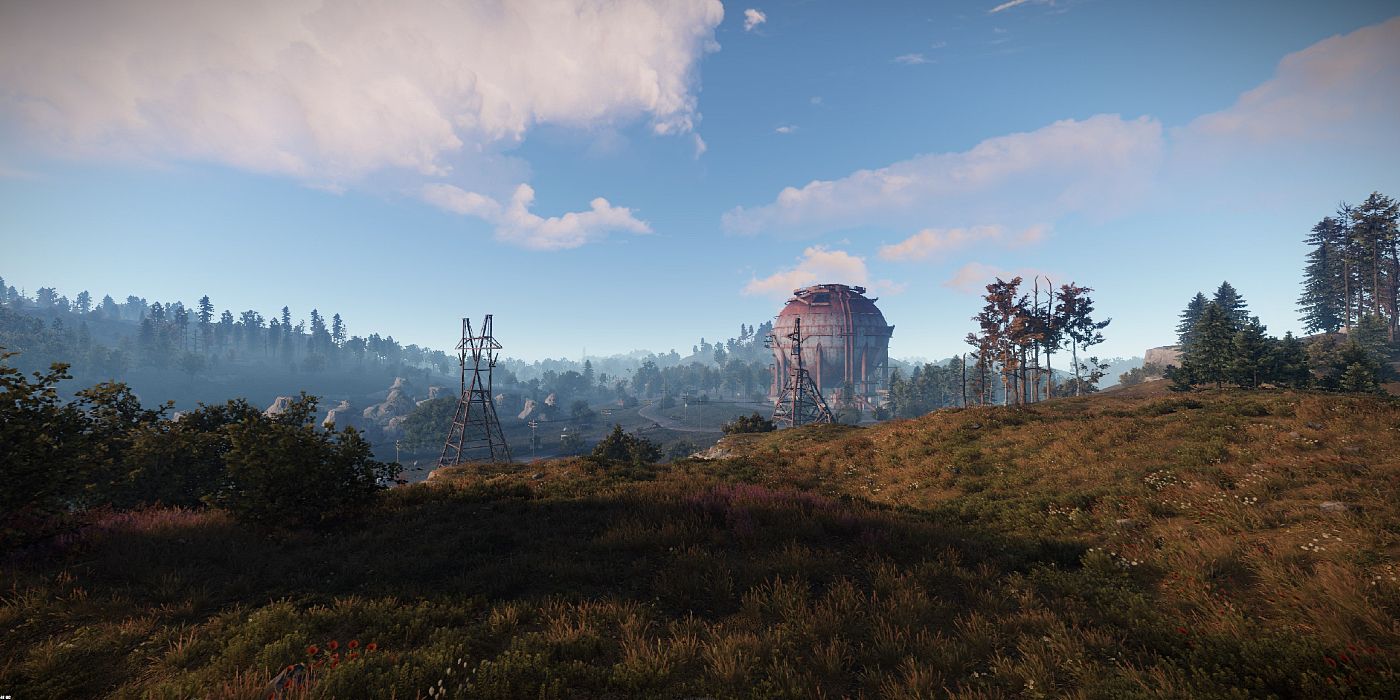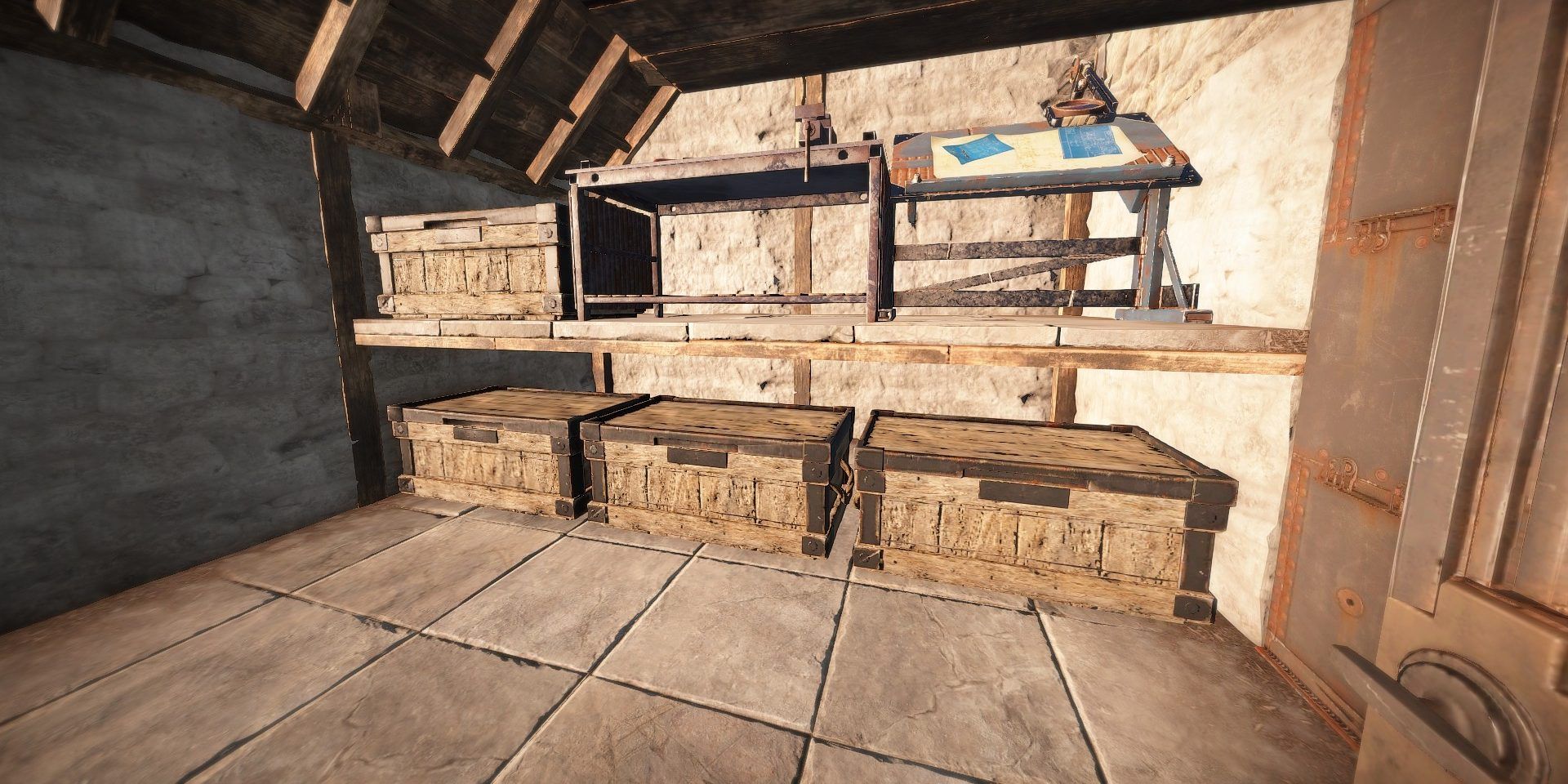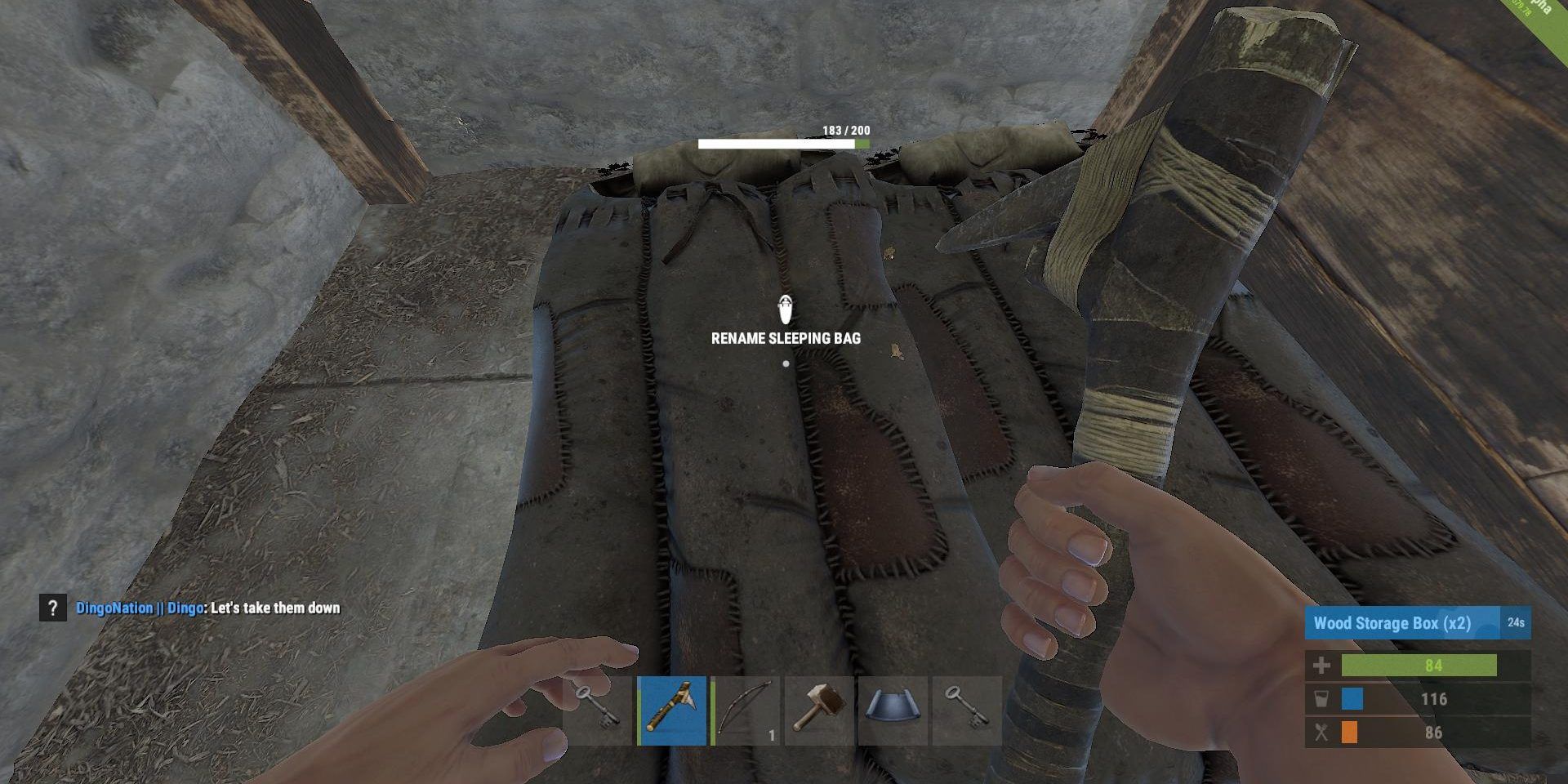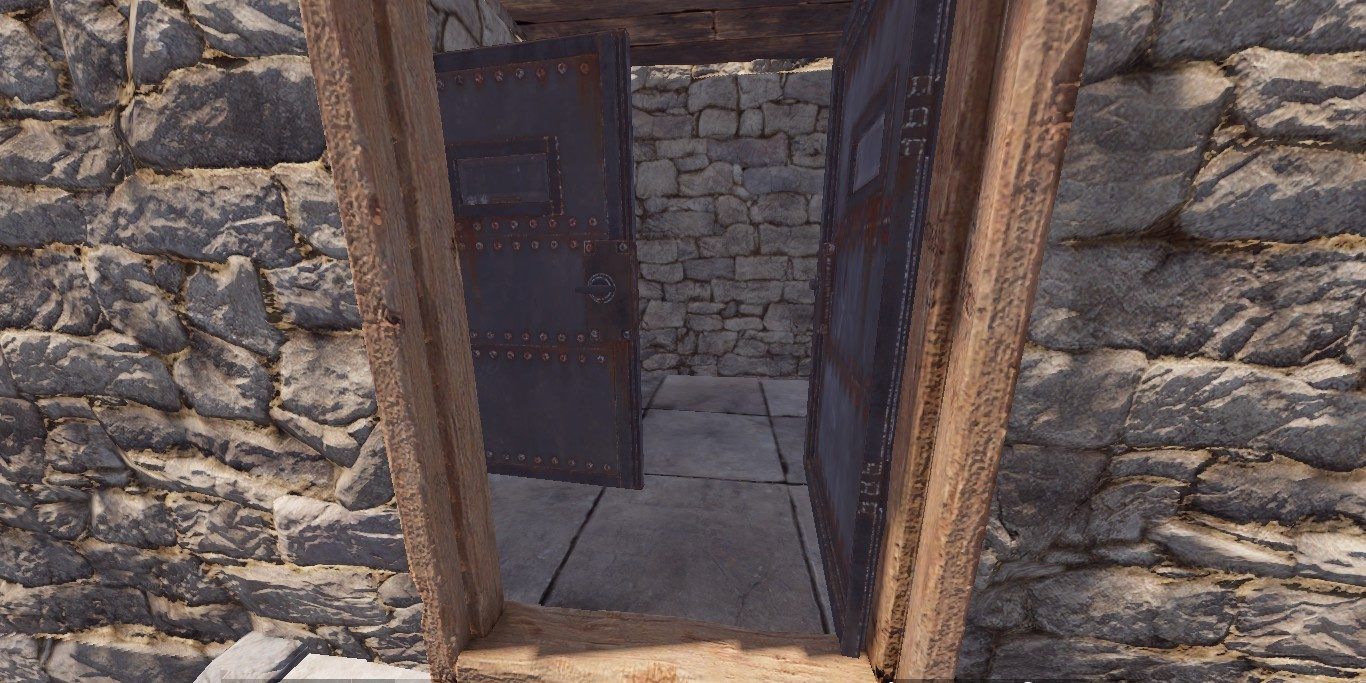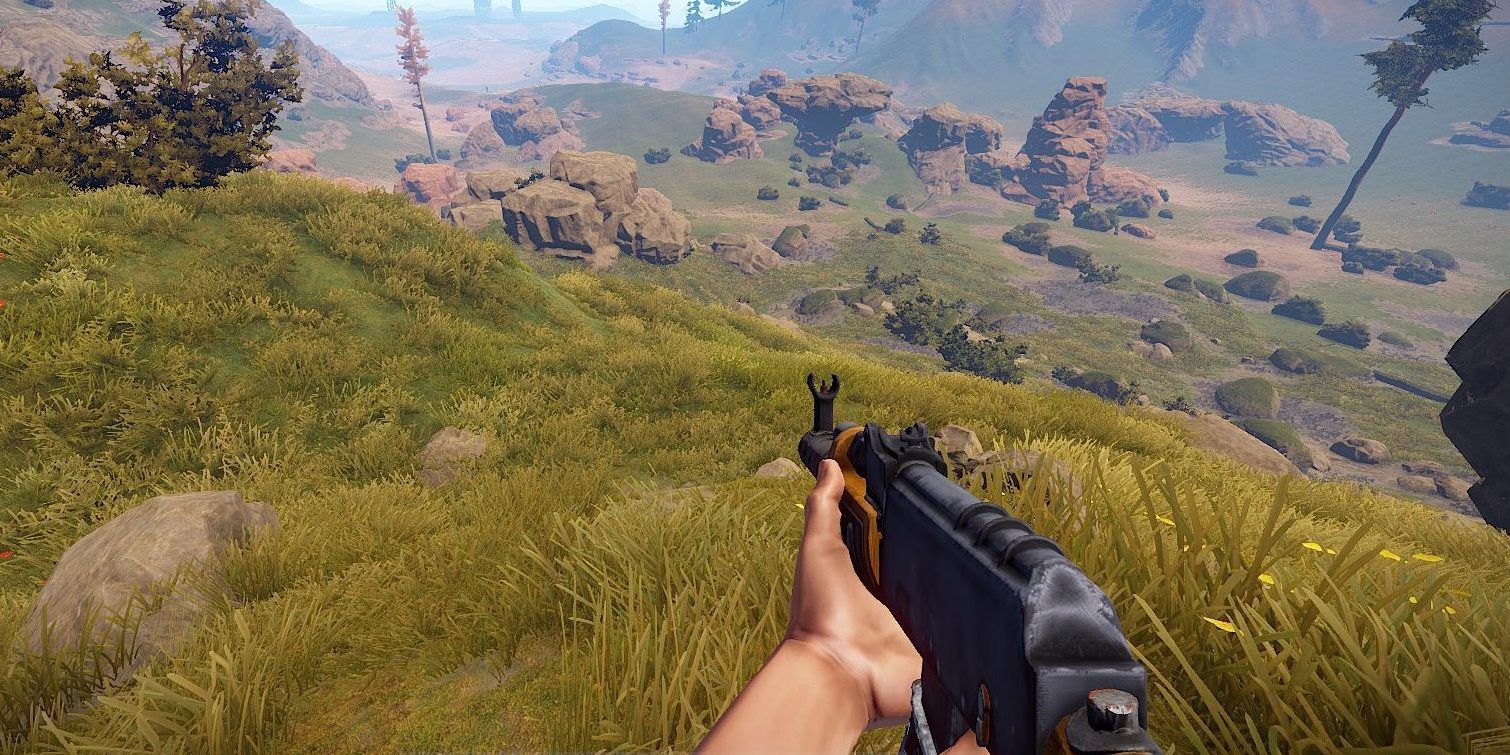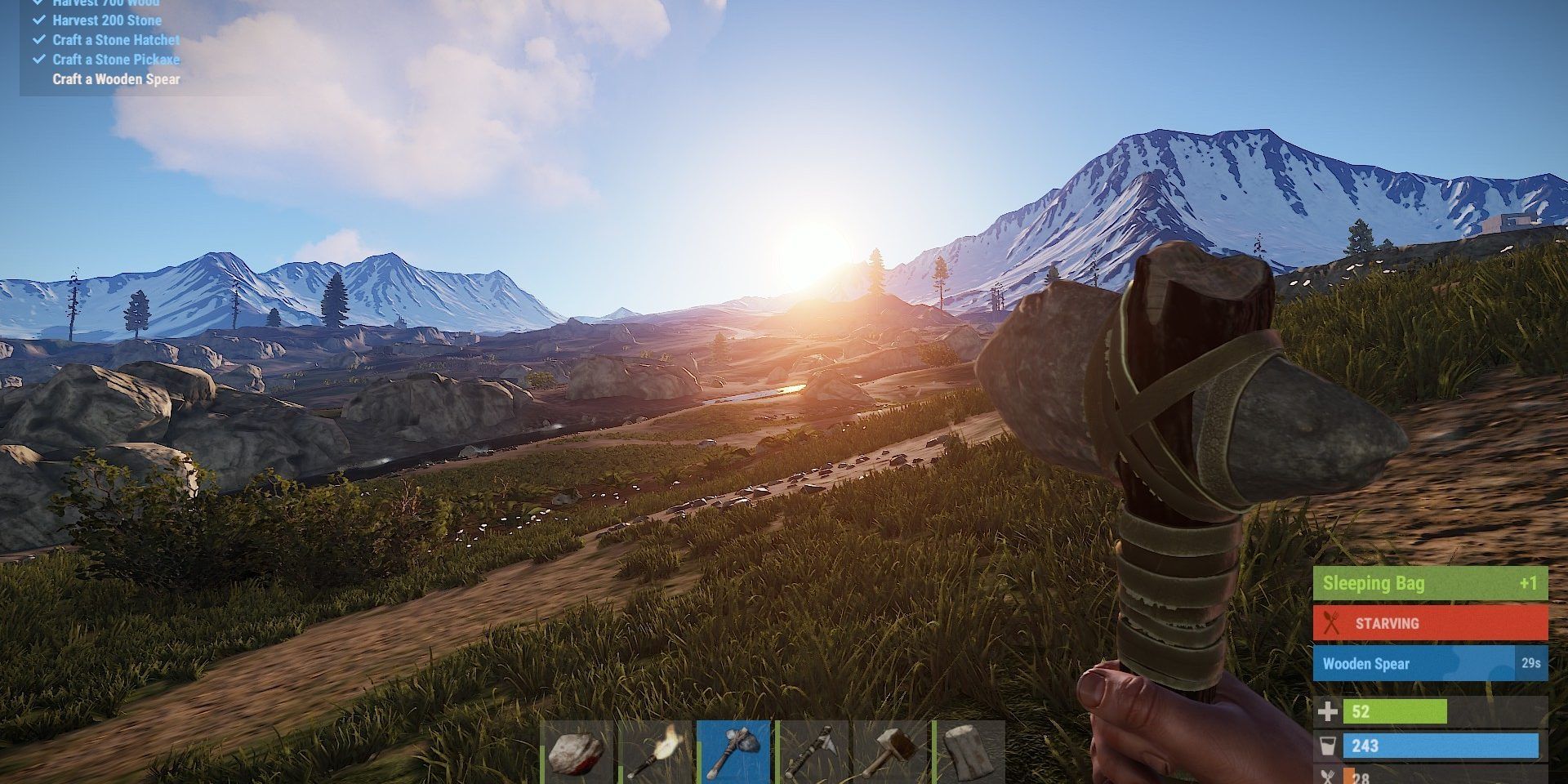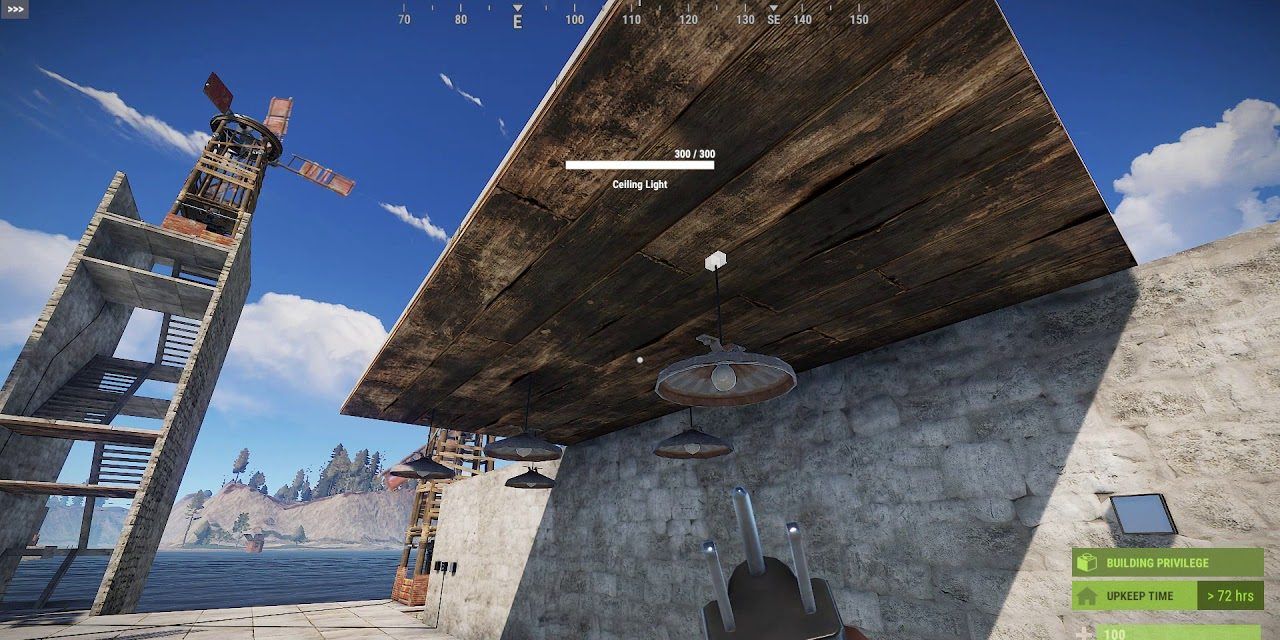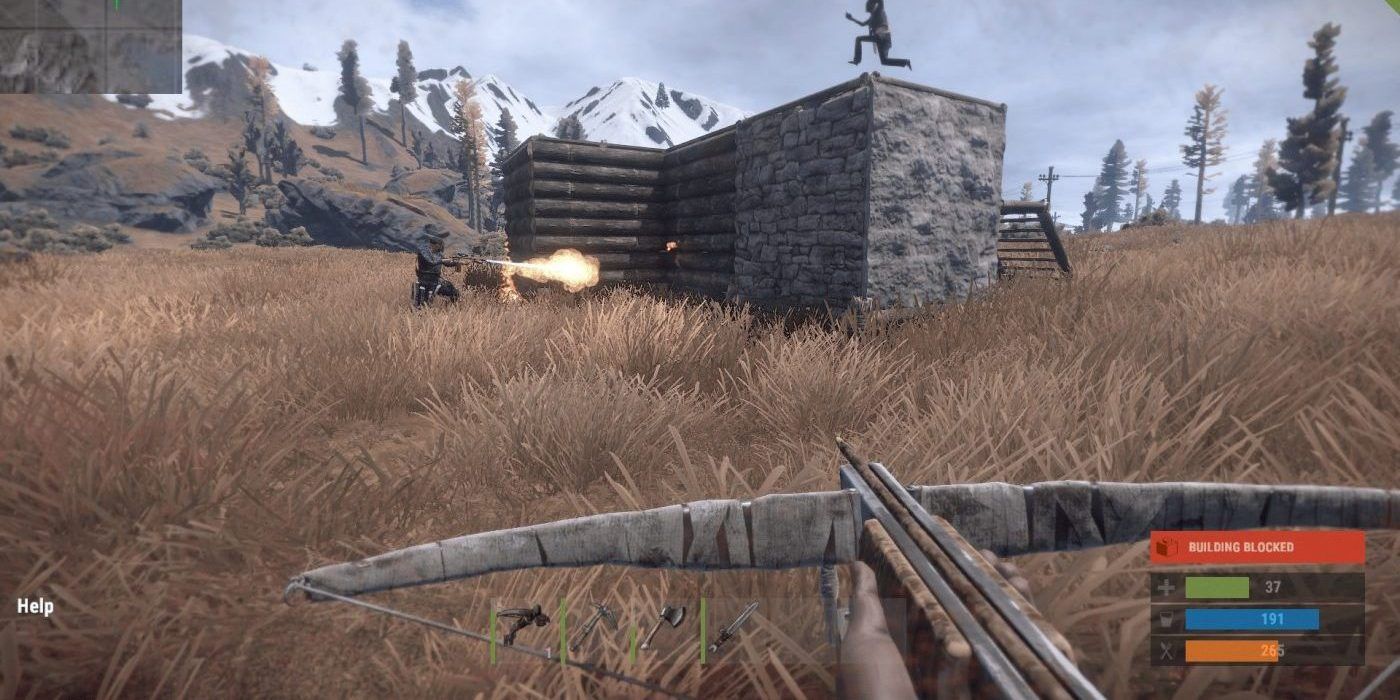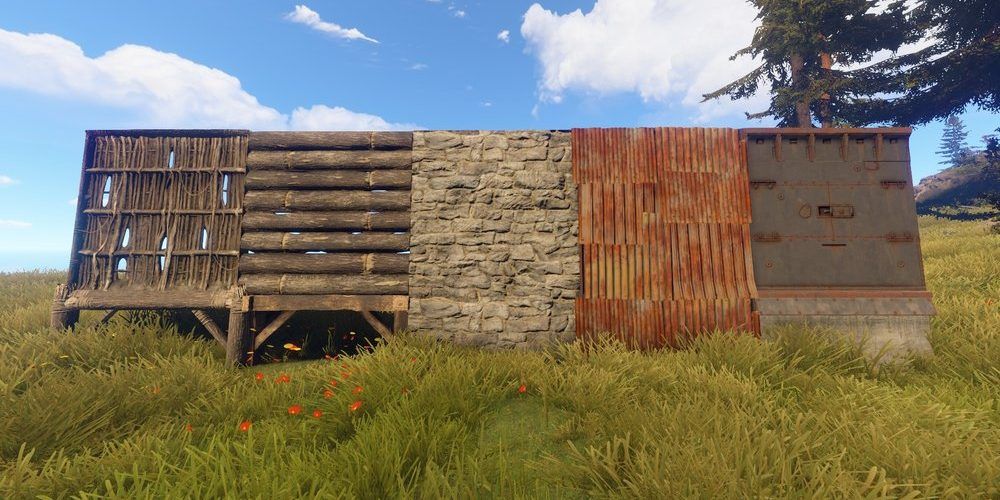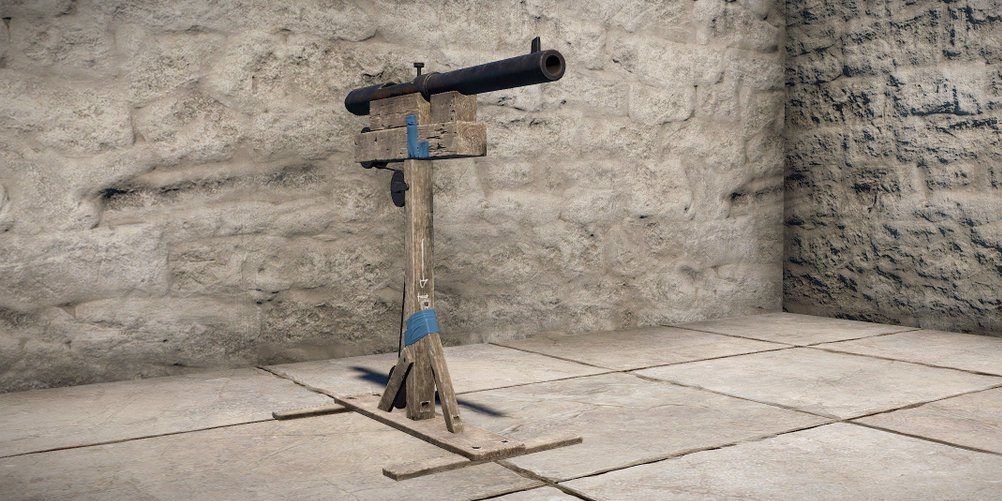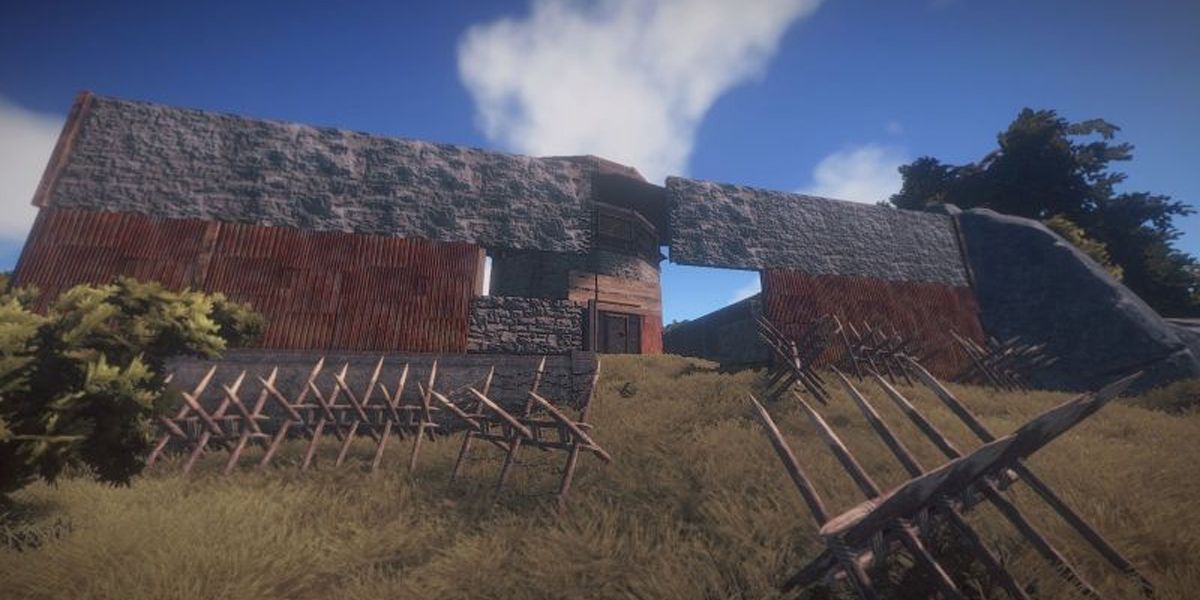One of the most crucial stages of survival in Rust is creating a structure to store materials in. Gamers that are lucky enough to create a small hut will have a much better chance of staying alive. However, getting to the necessary materials and building in the right location can be difficult even for experienced players.
Updated by Payton Lott May 21, 2021: With thousands of players joining Rust every day after the console launch, the new servers are flooded with clueless PMCs. Beginners are notorious for making a few common mistakes at the start of a wipe. The most glaring newbie blunders are building an assailable base and waiting too long to build. This guide will cover all of the things beginner console players must know about building to survive on Rust Island.
Getting A Hammer & Building Plans
Before survivors will have the chance to construct a home base in Rust, they will need a hammer and building plans. The hammer is used to rotate, remove, upgrade, and repair structures in Rust. The only material needed to craft the hammer is wood (x100).
Early in the wipe, a rock is all players need to chop down trees and collect wood. Just like the hammer, building plans are crafted with wood. After collecting an additional 20 wood, players will be able to start building.
What Resources To Farm And Where To Find Them
Early in the wipe, people will want to accumulate as much wood and stone as possible, as those two items will be the primary materials needed to create a safe hut for the first few nights. Stone nodes look like small boulders that are separated from the larger rock structures on the island. These mineable nodes have a shiny glare on them that can be seen from some distance away.
Later in the wipe, metal fragments and high quality metal are used to create even stronger structures. Metal fragments can be acquired by mining metal ore or recycling metal items at the recycler. Gamers can mine high quality metal ore in the snowy biome and smelt it to produce high quality metal.
Plan Before You Build
There are a number of build servers for new players to practice on before joining a real server. Beginners should definitely take advantage of build servers that allow players to plan their build before actually attempting to survive in Rust.
Experienced players use these servers as well, to practice new builds and increase their building speed. In a game based on survival, both speed and preparation are important. By having a "blueprint" before starting a new journey on a server, players will have a much better chance of success.
Start Small
In Rust, the most important reasons to create a building is that it prevents intruders and stores materials. A 1X1 hut is better than an immaculate build than can be raided. That being said, it is beneficial to have more space for storage. Players should start with a small structure and expand it over time.
The key to creating a reliable structure is practice and persistence. Rust gamers should start with a small but secure structure, and continually add sections as time goes on. It will be impossible to construct an intricate multi-level building in a few minutes, and there are always other players on the server anxiously awaiting a fellow player to slip up.
Always Build An Airlock
An airlock in Rust prevents enemy teams from breaking into a build if the creator dies while the door to the structure is open. The image above provides a good representation of what an effective airlock looks like.
Two staggered doors will prevent other players on the server from wandering in and stealing materials from a player who is waiting to respawn. Airlocks are important if players want to survive as long as possible in the game.
Where To Build
Deciding where to build a base is extremely important in Rust, as building in the wrong location can result in disaster. There are materials scattered throughout every map in Rust. However, there is a correlation between how readily available materials are and where players are on the map.
Heavily wooded areas will appear as a greenish-brown color on the map. These areas are lush with trees and are great areas for players that need a lot of wood to build their structure. Similarly, rock and metals will be more prevalent near mountainous regions of the map. Gamers need to understand what materials they need and where they can consistently find them. New players will be well off in areas that have both metals, rocks, and trees, as most builds require a diverse set of materials.
Mind The Topography
Beginners often create impressive builds that are impossible to construct on a slanted surface. If the structure gamers want to create can only be built on a perfectly flat surface, gamers need to find the flattest area of the map to start construction.
More often than not, areas with any level of gradient will make it difficult to set foundations and finish construction. Players that are bold enough to build on an incline need to practice on a build server beforehand.
Upgrade Ceilings First
Once gamers have created a reasonably good structure, they will naturally want to upgrade it. However, few players start in the right location. One of the easiest ways to break down a poorly constructed building is to hit it with a few well-placed rockets.
If players upgrade their ceilings, though, it is much more difficult for raiders to collapse the building. Gamers should start with the ceilings first, and upgrade the walls and foundations later.
Upgrading The Walls And Foundations
When to upgrade and what materials to use depends on a number of factors. Solo players will prioritize reinforced walls to deter rockets and explosive spammers. Those that have a group of friends will prefer to have mobility and a raid defense level instead of having heavy metal upgrades on every wall.
Early in a wipe, upgraded wood and stone walls are enough to keep out pesky raiders. Foundations do not need to be a higher tier, stone is good enough.
Appearance Is Everything
Experienced Rust players know to never put their wealth on display. While windows can be useful airlock tools, they will give raiders a sneak peek inside of a base. Additionally, if other teams on the server see expensive HQM exterior walls, they will assume there is valuable loot inside of the base.
The mantra act poor and live rich is certainly accurate in most Rust servers. Players and teams that flaunt their materials will be targeted. Besides, HQM is almost always overkill. Another common mistake players make is building replica bases after one has been destroyed. Raiders will see a new base, and know exactly how to dismantle it.
Traps Are Underrated
Traps, especially shotgun traps, are an incredibly clever way to keep raiders guessing. Early in the wipe, few gamers will expect traps in a small base. Even late in the wipe, raiders will not predict a labyrinth of carefully placed traps to dupe them.
Sometimes resources are better spent on deceptive traps than upgraded materials. Unless there is always someone online to monitor a base, traps are an essential feature of a well-fortified camp. Shotgun traps are incredibly effective at dumbfounding clueless raiders, and players should incorporate them into their base.
Other Essential Base Items
There are a couple additional items every base should have, for example, a lock and tool cupboard. Locks are essential, and a code lock is preferable. To craft a code lock, survivors need 100 metal fragments. In the early game, a key lock, which is crafted with wood, should be sufficient. Later in the wipe, gamers will have an airlock set up. Tool cupboards allow builders a wider radius while putting together a structure. It will cost a total of 1,000 wood, so it might make sense to wait a few hours before deciding to craft one.
This list may include everything gamers need to know, but it comes nowhere close to covering every useful tip about building in Rust. An article that extensive would be the size on an encyclopedia. With these tips, though, new and intermediate players will have the knowledge necessary to build a viable base.

